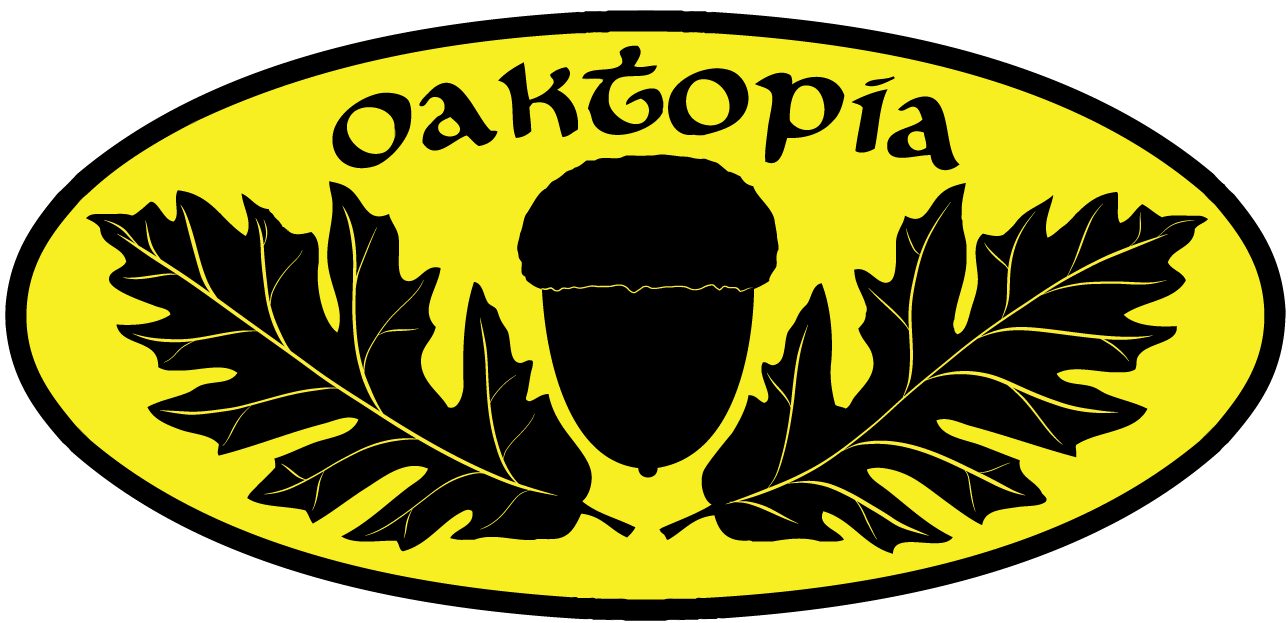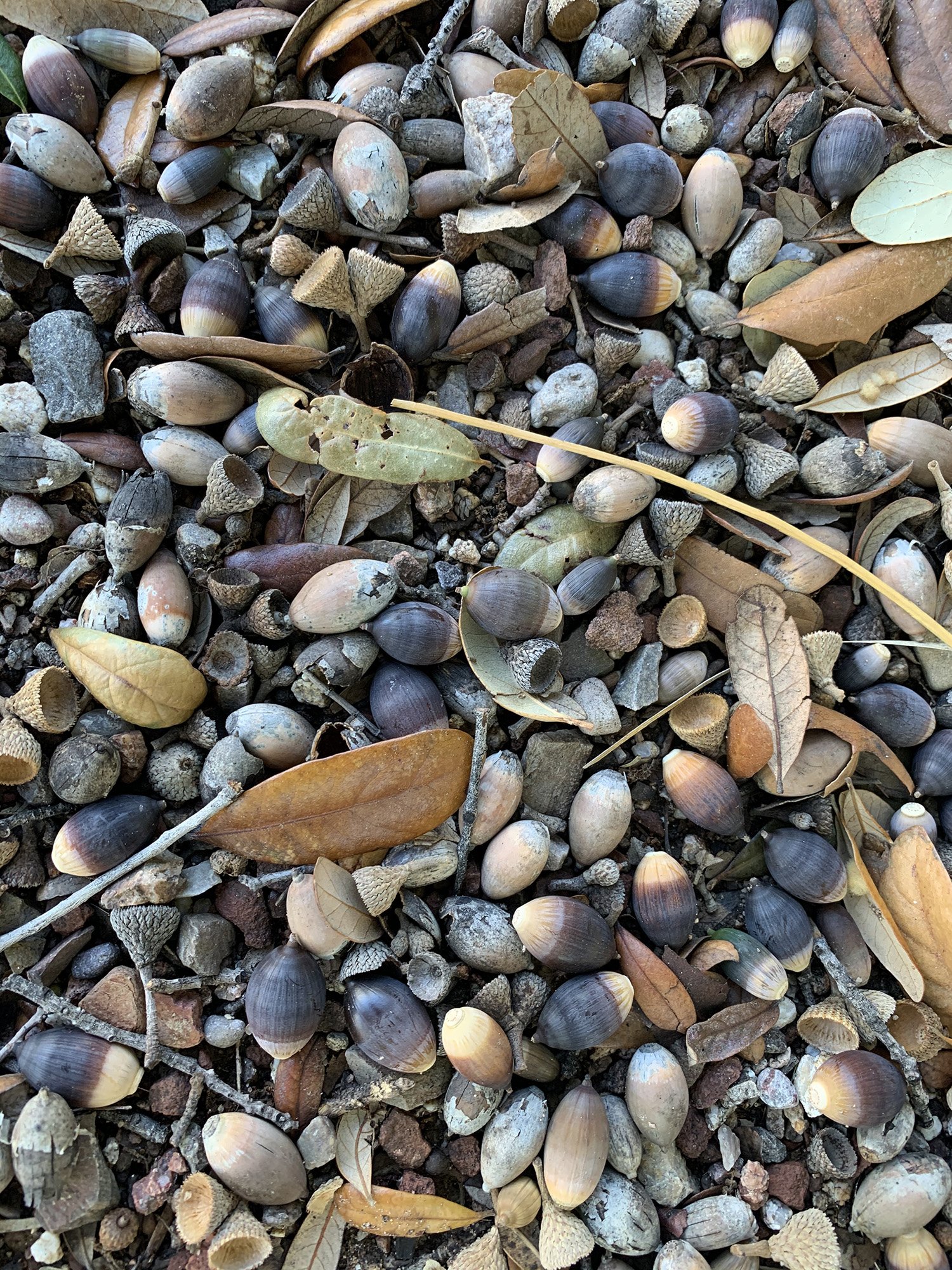The Acorn Hunter’s Lament
So you are away from home, and just found a great oak tree. You want to grow that oak tree, to make one (or more) just like it. And, look! There are acorns! But the acorns are green, and you know you need to wait if you want to grow this oak.
But you aren't sure how long until they are ripe. You don't really have any idea what kind of oak it is, nor do you know anyone to ask. It's just this cool, silent oak, in some unexpected place. Which happens to be a couple hour drive from where you live. But you want those acorns, and vow to come back.
Then you wait some reasonable amount of time, and come back, and you see the acorns are still green. Bigger, but still decidedly green. You just drove for hours, only to come away with.... information. And you still don't know when the gosh darn acorns will ripen!
But you are a determined squirrel (or other acorn vector of your choice), and you come back a month later only to see just a few partly brown, nearly ripe acorns, high up in the tree. The rest are still green. So you missed on timing, but only by a week or two. You just took another trip, only to return empty handed, but, again, with a little more information.This next step tells just how determined a squirrel you really are. Will you make a third multi-hour drive to actually get some acorns? Oh, but wait. You are planning to collect acorns off the ground, right? Hmmm.
Are you sure that someone who lives closer to the tree might not get there first? Maybe they are small, but also maybe they are hungry?
So, truly determined squirrel that you are, you make that third return trip. And you find that there are indeed acorns on the ground, but only a few, and many of those have been wrecked through chewing. But you got some good ones. Maybe a dozen or so. After making 4 trips, and spending tens of hours.
And you still don't know what the hell the tree is! Although, to be fair, by now you almost certainly have some good guesses.
Now let's say you have a little nursery set up, and you pop these acorn babies in their pots. You set the acorns on their side on top of the container, and press them into the soil until barely covered. And you wait a while, checking every day.
One day you come out, and something has gotten half of them! Whatever it is, you have to figure out how to stop it, or you will lose these now relatively priceless jewels! And now you need to think about protecting those precious acorns, which usually means screening them with half-inch opening hardware cloth. Plus trapping - it's almost always rodents munching your precious acorns and seedlings, so you can plan on some fun extermination work. (Snap traps almost invariably work best.
So by now you are a clever squirrel, earning more and more hard-won information, and you are rewarded with some oak seedlings in the spring! They look lovely! And you are a good grower, and they grow nicely into the summer. Their leaves darken with chlorophyll and harden their waxy cuticles, and more new growth comes. You study the new growth excitedly.
And you realize that it doesn't look like the parent tree! You have a hybrid!
But you still don't know who the mother tree is for certain, and you didn't notice any other, different oaks around the mother tree. But then again, you really weren't looking, and, if you were, you probably wouldn't know the identity of the pollen parent, either.
So who knows what you have! Is that fun? Or not?
Summer continues, and you get another burst of new growth from several of the trees.
But then the new growth starts to turn white and shrivel. Drat! Powdery mildew!
A wise and brave squirrel culls the weak and diseased, so now we only have a couple of seedlings left, and we cruise into fall, and get some nice, late fall coloration to the leaves. Hey! Things are looking up!
The fall color fades until the leaves are the color of paper grocery bags. But they won't drop off! Drat again! Marcessance. Warren Roberts from the University of California, Davis Arboretum taught me to remember the word marcessant by noting that the clinging, dead leaves mar the landscape.
I learned the negative power of marcescent trees years ago, when I had friends with a small oak nursery just outside Palo Alto. They planted strange oaks, some of which are still standing today along Page Mill Road. Various Quercus macrocarpa and Quercus robur hybrids, prominently displayed at a bend in the roadway.
One winter day I was standing with the nurseryman of the establishment, looking up at the road, with a bicyclist was headed up the sloping curve. Seeing us, and also seeing the oaks with dead paper bag winter leaves, the bicyclist yelled down at us "your trees are dead!!"
Folks in California don't like marcessance. The reason is simple. Most native trees in coastal California, both by type, and also by population count, are evergreen. Deciduousness evolved due to cold temperatures, which much of coastal California hasn't experienced in eons.
In California forests, woodlands, and savanna dominated by evergreen trees and clean dropping deciduous tree species, dead paper bag leaves indicate a dead tree, which is also a hazard because gravity always wins, and dead trees inevitably fall over. They also burn rather readily, so the clinging dead leaves bespoke death to that cyclist, and he let us know.


